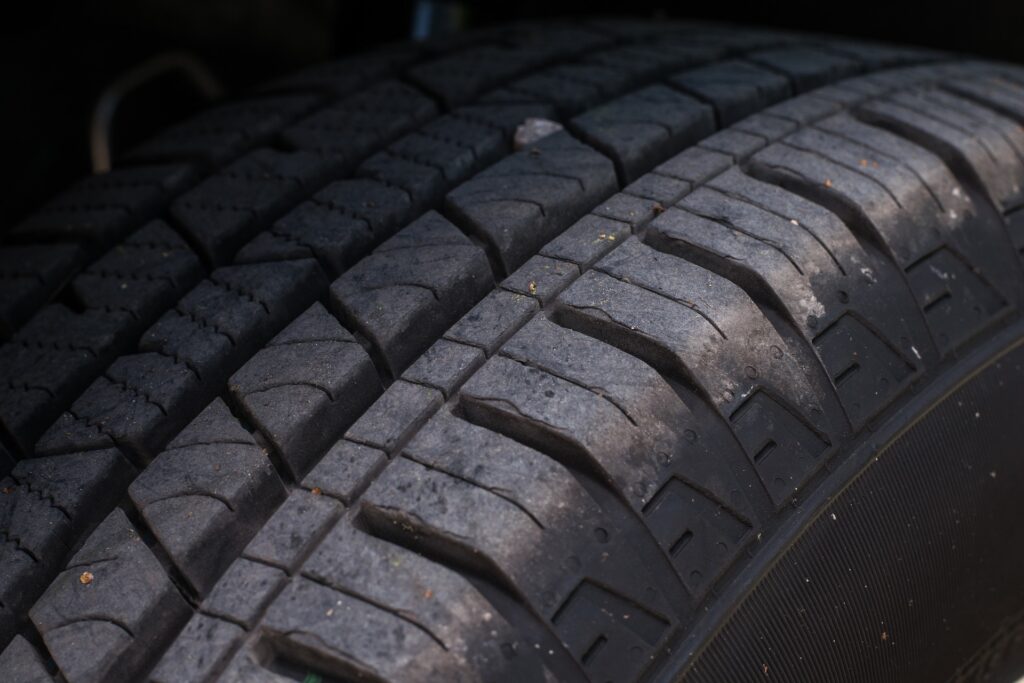For most of us regular drivers, all-season tires are our best friends. Although it is a no-brainer that tread pattern is a major contributor to the specificity of a tire for a particular terrain, the anatomy of an all-season tire is not that simple, and is surrounded by some degree of confusion. Can an all-season tire be directional? – Yes. Are ALL all-season tires directional? – Well, no.
While many all-season tires have a directional tread pattern due to its compatibility with multiple conditions, asymmetrical pattern and other non-directional options are also in the mix. The ultimate choice comes down to the specific conditions that the tire is to be driven in, as well as the monetary motives of the driver.
Directional tires have tread that rolls in a single, specified direction that is indicated by an arrow. This specification has to be strictly followed, if one intends to get the most out of the tire. This means that the possible rotations are limited to just one side, and a failure to comply can adversely affect the quality of ride, tread life and safety. This, coupled with the high cost can confuse the consumer, and even scare him away.
However, it should be kept in mind that each type of tread has its advantages and disadvantages, and you ought to weigh them out before making the final decision. Directional tires are the real kings if you plan on driving at high speeds in wet or snowy areas, and need a great deal of stability. However, if cost effectiveness, high load capacity or durability are your major goals, you might explore other options.

Types of Tire Treads Available:
The tire industry these days is flooded with a variety of tread types, each one suitable for a particular need or a specific terrain. Some of the popular tread patterns are as follows:
1. Symmetrical:
This is the most commonly encountered tread pattern. As the name suggests, the tread is symmetrical throughout, with a similar pattern on both inner and outer sides of the tire. All the voids and channels in a symmetrical tread are of equal size. This means that the tire can be rotated in many directions without any sort of compromise on the performance. Symmetrical tires excel in terms of fuel efficiency and durability. In addition, the ride is mostly quiet and comfortable. Nonetheless, they are not suitable for snow or wintry conditions.
2. Asymmetrical:
This type of tread is particularly designed for heavy duty performance. It is a combination of multiple tread patterns, each one suited for a different task. The inner and outer sides of the tire have entirely different patterns. The inner tread design is usually specialized to provide maximum wet and snow traction, while the outer side features a pattern that comes in handy when dry and paved areas are encountered. Asymmetrical tires provide an unmatched grip, stability and superior handling.
3. Directional:
This is another common tread pattern. It is designed in a way that all the voids and channels of the tread face in one specified direction, resulting in an overall V shape. The tip of the V points in one direction. These tires can only be rotated from front to back, as any other orientation will change the direction of the tire. Directional tread is suited for wet and slightly snowy conditions, as its unidirectional grooves and channels can allow a great amount of traction under these conditions.
Benefits of Directional Tires:
Up till now we have established that each kind of tread has its pros and cons, and the balance between these two and the target terrain determines which one is best suited for you. Directional tires, however, excel in certain areas:
1. Wet and Snow Traction:
The V shaped tread of directional tires has a great advantage in terms of wet and snow traction. It allows water and slush to be evacuated from the tire, away from its direction of motion. This effectively resists hydroplaning and prevents the vehicle from slipping.
2. Fuel Efficiency:
Directional tires are designed in a manner that decreases their rolling resistance. This means that less heat is generated while driving them, making them economical in terms of fuel expenditure. We’ve gathered some of the most fuel efficient tires on the market in our articles: Best SUV Tires for Fuel Economy and Best Truck Tires For Fuel Economy.
3. High Speed and Comfort:
Directional tires have another amazing feature – a solid central rib that provides a terrific level of stability. This is a great plus if you tend to drive at high speeds. It is also ideal for sporty vehicles. Furthermore, it guarantees a quiet and comfortable ride, which is true even at high speeds.
Related Tire Questions:
